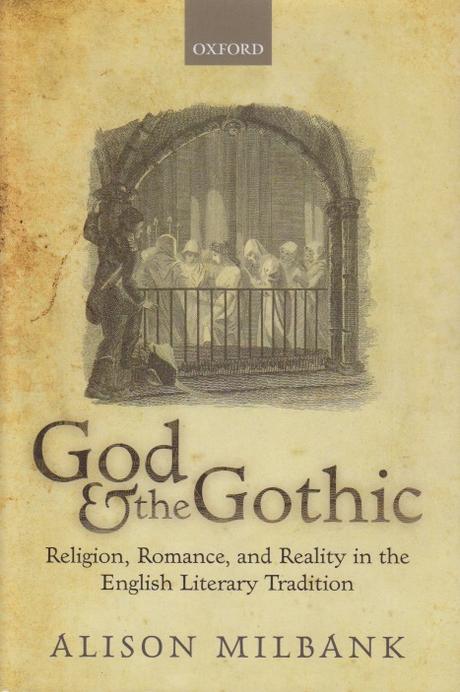
I have tried, in my halting way, to articulate what religion has to do with horror. Alison Milbank is more experienced than I and it shows in her book God and the Gothic: Religion, Romance, and Reality in the English Literary Tradition. There can be little doubt that the gothic is the direct ancestor to what became horror in the twentieth century. In this intriguing study, Milbank explores just how the gothic made extensive use of religion, a sensibility that has carried over into modern horror. Having taken a good long look at this myself—the fascination was there before Holy Horror and reaches back to my childhood—it is nevertheless affirming to find another student of human fears and fascination regarding the darkness has come to similar conclusions. I always walk away from books like this with a renewed reading list.
Milbank points out, in the context of the literary world of England, how horror and religion not only cover the same theological ground, but come into direct contact time and again. She does so by suggesting that Protestantism constantly seeks the lost Catholicism. In England this came to be embodied in the Church of England, the middle way between Catholic and Protestant. She covers various aspects of this such as melancholy, the doubling of characters, supernatural creatures, and death. And more. This isn’t a quick or light read, but I found myself making many connections I had missed. Much of this, admittedly, came in books I’ve not read. One of the problems with interest in the classic gothic is that bookstores don’t cater to selling older books and some of them weren’t successful in their own day, let alone ours.
There is a vindication in finding you’re not alone in a field. Many of us who work on religion and horror know one another. We’re a somewhat small, hidden group. Milbank approaches all of this from the point of view of theology. Theology is a somewhat distinct practice from religious studies and even from biblical studies. There is overlap, of course, but theology is generally distinctly Christian in a context like this. And that fits the living context of the many authors explored in this study. Many familiar, and a few unfamiliar names appear. What they have in common, apart from making up the cadre of gothic writers, is that religion influenced their writing and they weren’t shy about noting it. This book explores the shadows very well and I’ll be revisiting its insights again and again.
